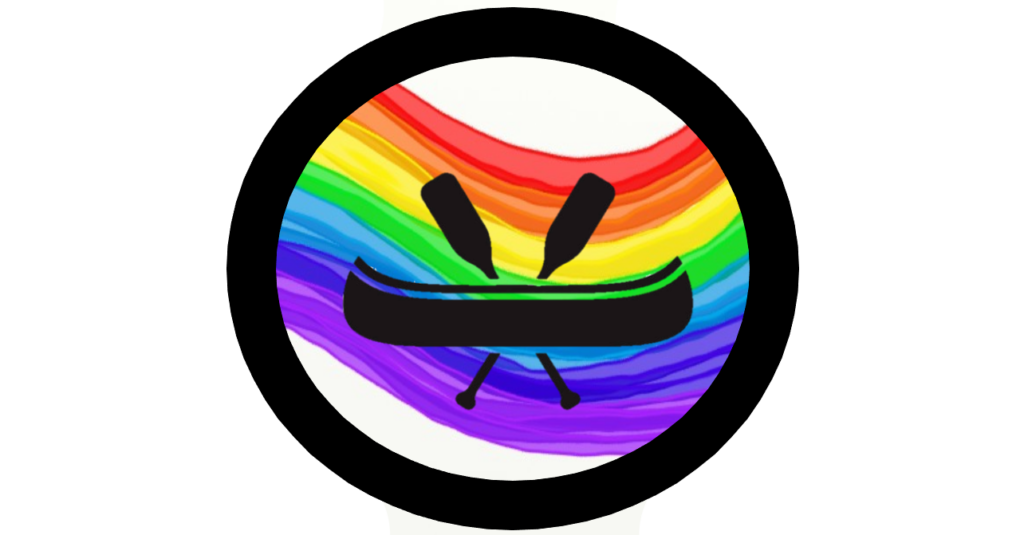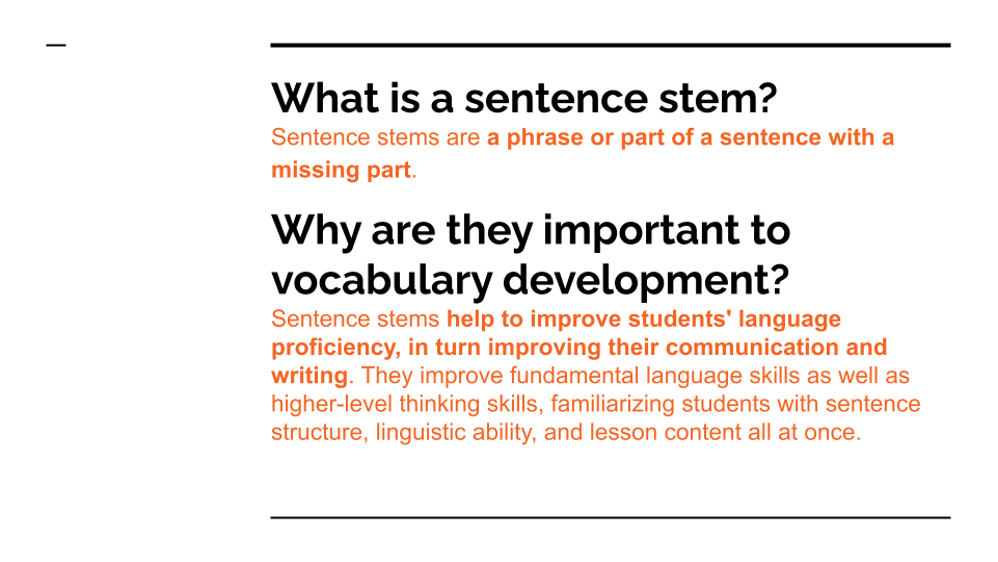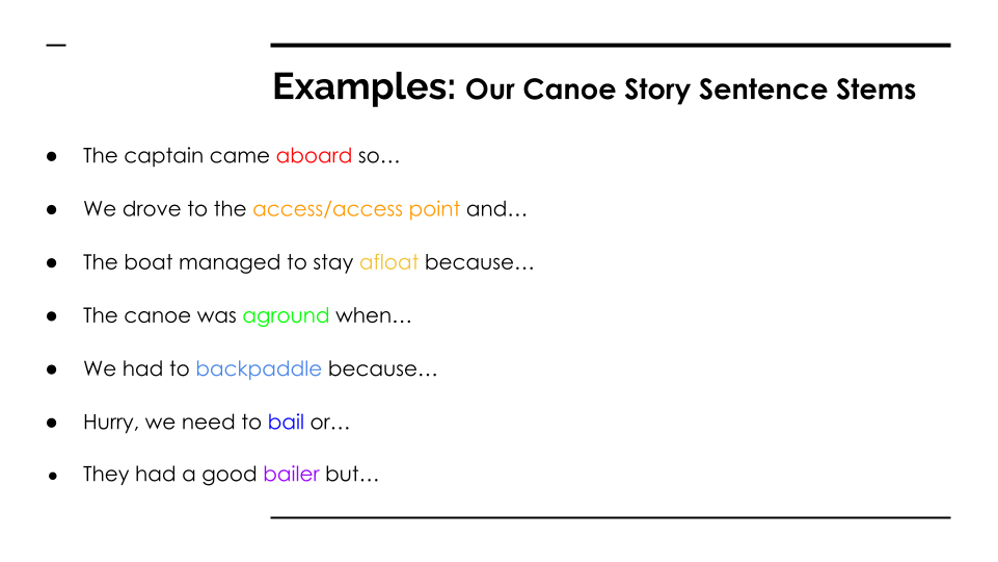
This week’s assigned readings, Bringing Words to Life: Robust Vocabulary Instruction (Beck, McKeown, and Kucan, 2013) and The Writing Revolution: A Guide to Advancing Thinking Through Writing in all Subjects and Grades(Hochman and Wexler, 2017), are extremely resourceful and lend themselves well to lesson planning in general, and integrated and cross-curricular unit planning in particular. These books are not only helpful in Language Arts (as most would assume when they hear the words vocabulary and writing) but for all subjects in British Columbia’s redesigned curriculum. If in doubt, all you have to do is look at my group’s integrated, cross-curricular unit— “Our Canoe Story”—and see that both resources were crucial to its planning. Many of the books’ activity suggestions make up the backbone of our lessons, especially my English Language Arts/Drama lessons, which I titled: “Explicit Vocabulary Instruction & Reinforced Teaching via Vocab Games, Stories & Skits.”
Vocabulary is absolutely essential: “a rich vocabulary supports learning about the world, encountering new ideas, [and] enjoying the beauty of language” (Beck et. al., 2013). As such, we knew that our integrated unit needed to begin with vocabulary instruction. Students come from various backgrounds and hold a wide range of background knowledge, so it is important that we (as teachers) do our best to “level the playing field.” Explicit vocabulary instruction has the power to do this; it has the power to take an individual from knowing nothing about a concept, topic, or (in our case) activity (i.e. canoeing), to knowing a great deal. This was the goal of my series of lessons:
In this section of the unit, which is spread over seven afternoon blocks (1 – 1.5 hours in length), students will be introduced to, and work toward mastery of, vocabulary specific to the activity of canoeing. Explicit vocabulary instruction will be provided and students will partake in several vocabulary activities/games that will reinforce prior teaching, allow for ample retrieval practice and repeated exposure, and strengthen students’ depth and breadth of vocabulary knowledge. Several stories will be read throughout the second week and students will create concept maps and skits based off of these books. Skits will be rehearsed during the last block and performed around the campfire during the overnight field trip.
In this overview, I mention ‘explicit vocabulary instruction’, ‘vocabulary activities/games’, ample ‘retrieval practice’, and ‘repeated exposure’—all things recommended and endorsed by Beck et. al.: “the operative principle for vocabulary instruction is that it be robust: vigorous, strong, and powerful in effect. A robust approach to vocabulary involves directly explaining the meanings of words along with thought-provoking, playful, and interactive follow-up” (p. 3); adding that “multiple encounters are required before a word is really known” (p. 83).
During my first lesson, “Our Canoe Story: Vocabulary & Sentence Stems”, students are asked to perform a canoe vocabulary self-assessment intended to help them (and the teacher) assess prior knowledge. This assessment was adapted from a chart in Bringing Words to Life, “Chapter 1: Rationale for Robust Vocabulary Instruction” (p. 18). Upon completion of the self-assessment (attached for reference), the teacher walks students through a PowerPoint that discusses each vocabulary word, complete with a student friendly definition, example, and picture (also attached for reference). Beck et., al. continuously emphasize the importance of student friendly definitions and examples throughout “Chapter 4: Bringing Vocabulary into the Earliest Grades” and “Chapter 5: Instructional Sequences for Later Grades.” The use of a vocabulary notebook is encouraged (Beck et., al., p. 96), which is why I chose to provide students with a “Canoe Story Journal”, complete with student friendly definitions and sentence stems for each vocabulary word.
Over the course of my lessons (and the unit), words are re-visited multiple times to help students successfully navigate unit concepts. Students receive explicit instruction on sentence stems (which I alluded to earlier) and are asked to complete a sentence stem for each vocabulary word. Sentence stems are another activity highly touted in Bringing Words to Life (Chapter 1, pp. 14-15; Chapter 4; Chapter 5) and in TWR (pp. 40-41). Having students write about the words they are learning is key and using the contractions: because, but, and so (highlighted in TWR) are favoured since they “reinforce crucial vocabulary […] while simultaneously familiarizing students with complex syntax that rarely appears in conversation” (Wexler, 2022). These contractions “require students to think analytically” and “engage in far more specific and focused thinking than just asking them to respond to an open-ended question” (Hochman & Wexler, 2017, p. 40). Vocabulary games are another favoured way of reinforcing vocabulary, which is why I created my second lesson: “Vocab Games – Matching, Charades & Jeopardy”, where students work in pairs to create “Canoe Vocabulary Memory Match” and participate in “Canoe Vocabulary Charades” and “Canoe Jeopardy”, both of which involve unit vocabulary. Beck et., al. highly recommend taking advantage of games and they mention Jeopardy in Chapter 1 (p. 15). The “Vocab Games” in my lessons are intended to solidify vocabulary knowledge and make learning the vocabulary fun and lively: “students need to develop an interest in and awareness of words in order to adequately build their vocabulary repertoires” (Beck et., al., p. 14).
In my third lesson, “Canoe Story Read Aloud & Modeling Story Concept Mapping”, the teacher reads aloud the short, illustrated children’s book, “me and you and the red canoe” by Jean E. Pendziwol. Following the read-aloud, the teacher draws attention to the book’s use of unit vocabulary and models how to build a concept map for the story. In later blocks, students read stories and create concept maps of their own, which they use to make skits (to be performed at the overnight canoe trip). Bringing Words to Life advocates strongly for using story to help build the depth and breadth of student vocabulary, specifically at our targeted grade level (i.e. 6-7): “the vocabulary work at upper grade levels can also be more rooted to a text and dealt with in a way that both teaches the words and brings enriched understanding to the text” (Beck et., al., p. 94).
All in all, it is safe to say that this week’s assigned readings were crucial to the development of “Our Canoe Story”—especially my lessons on “Explicit Vocabulary Instruction & Reinforced Teaching via Vocab Games, Stories & Skits.” I highly recommend adding both Bringing Words to Life and TWR in your teaching arsenal—for lesson planning in general, and integrated and cross-curricular unit planning in particular.
Supplementary Material from my Lessons
Sample of “Our Canoe Story – Assessing Prior Vocabulary Knowledge” assessment chart:

Example of student friendly definition, with example and visual depicting the vocabulary word (note: a non-example should be discussed but was not included on PowerPoint slides for fear students would hold onto incorrect information instead of correct information):

Sentence Stems:

Examples of the Sentence Stems I included in the “Canoe Story Journal”:

References
Beck, I., M.G, McKeown, and L. Kucan. (2013). Bringing Words to Life: Robust Vocabulary Instruction. The Guildford Press, New York, NY.
Hochman, J., and N. Wexler. (2017). The Writing Revolution: A Guide to Advancing Thinking Through Writing in all Subjects and Grades. Jossey-Bass: A Wiley Brand, San Francisco, CA.
Wexler, N. (2022). “When Language Prevents Kids From Succeeding At Math.” Retrieved July 20, 2022 from https://www.forbes.com/sites/nataliewexler/2022/06/21/when-language-prevents-kids-from-succeeding-at-math/?sh=2b68339e623d

Leave a Reply